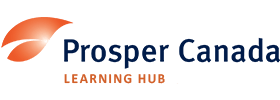Discover financial empowerment resources
Discover financial empowerment resources
Financial literacy has been proposed widely as an effective approach to preparing people to manage their finances. This paper proposes an alternative concept, financial capability. Financial capability includes both the ability to act (knowledge, skills, confidence, and motivation) and the...
Current income is usually insufficient to cover college costs in most families, who believe that they must save for college for their children. Furthermore, effects of household savings and asset holding may extend beyond financial security and affect long-term development of children through...
This report, “Determinants of Asset Building,” provides a policy-oriented conceptual framework that has the potential to explain saving and asset accumulation across the entire population and to account for the low levels of saving and asset accumulation in the low-income population. The report...
This report describes the rationale and design of a project that will carefully implement and evaluate an innovative program — called Learn$ave — that aims to help low-income Canadians build savings for use in enhancing their labour market skills through adult education and micro-enterprise...
